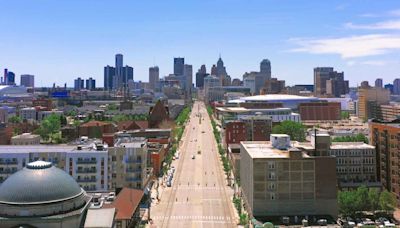Search results
- The city’s industrial growth was a magnet for migrants, at first chiefly European immigrants and later African Americans from the South. The population has declined steadily since the mid-1950s, however, in part because much of the white community moved to the suburbs and also because of the loss of industry.
www.britannica.com › place › Detroit
1 day ago · It's been such a precipitous decline that between 1950 and 2010, Detroit's population shrank by a staggering 61%, dropping it from fourth to 27th largest city in the nation.
1 day ago · Mayor Mike Duggan must have been pleased when news of Detroit’s population growth broke. ... the Black population of Detroit has been on a steady decline and is currently ... Renvy.com Michigan.com
4 days ago · Michigan will have more than 230,000 more people in the next decade, and then decline by 128,000 from 2034 to 2050. Overall, the state's population is expected to drop by about 700,000 in 26 years.
2 days ago · The city’s population peaked at around 1.8 million in the 1950s, making Detroit the fifth-largest city in the United States, and all those houses were needed. But the 1970s saw a flight to the ...
3 days ago · Census Bureau estimates: Detroit population rises after decades of decline, South dominates growth. U.S. Census Bureau estimates show America's Northeast and Midwest cities are rebounding...
3 days ago · Michigan's population is expected to grow by about 230,000 people in the next ten years. However beginning in 2034 Michigan will then see a population decline of about 700,000 people over the next 26 years.
4 days ago · Detroit's population soon skyrocketed as immigrants moved there to work at Ford, General Motors, Chrysler and other automotive factories. Detroit's decline started in the 1960s and spanned decades.




